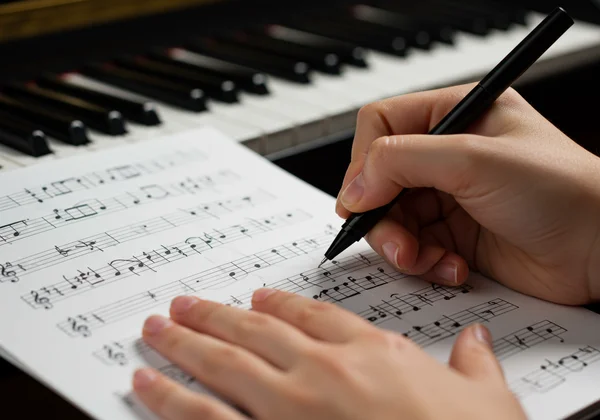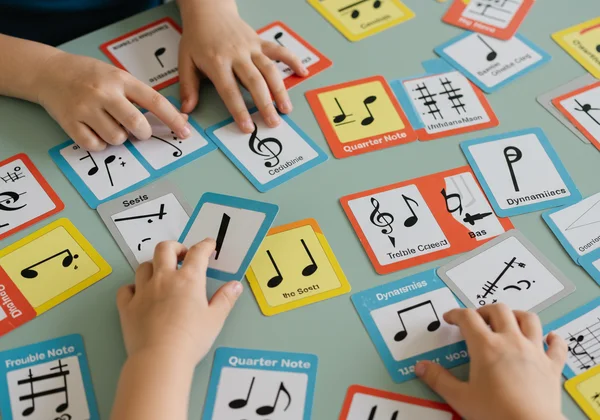10 Music Classroom Activities with Printable Staff Paper
Music educators face a constant quest: how to keep lessons engaging and inspiring, especially when budget constraints limit classroom materials. Finding high-quality, versatile, free staff paper is often at the top of that list. This guide offers a solution, exploring ten practical and engaging music classroom activities that leverage customizable, printable staff paper. These ideas, designed for all ages and skill levels, will help you integrate music theory, composition, and notation in fun, effective ways, ultimately revitalizing your lesson plans and empowering your students' musical journeys.

Engaging Staff Paper Activities for Dictation & Theory
Building a strong musical foundation starts with ear training and a solid grasp of music theory. Blank staff paper is an indispensable tool for these fundamental exercises. It provides a clean slate for students to translate what they hear and learn into written notation, reinforcing core concepts in a tangible way. These activities are perfect for warm-ups or focused practice sessions.
Rhythm Dictation Challenges with Blank Staff Paper
Rhythmic understanding is the backbone of musical performance. To sharpen this skill, clap or play a simple rhythm on a single pitch and have students notate it on their staves. Start with basic quarter and eighth notes in 4/4 time, gradually introducing more complex rhythms, rests, and time signatures. For this, a simple single-line percussion staff or a standard five-line staff works perfectly. You can instantly generate custom sheets with the exact number of staves you need for the exercise.
Melodic Ear Training Exercises on Your Own Staff
This classic exercise is crucial for developing relative pitch and auditory skills. For further study, consider resources like Teoria's music theory exercises. Play a short, simple melody on the piano or another instrument, and ask students to write it down. You can start with stepwise motion within a five-finger scale before expanding to larger intervals and more complex melodic contours. Having an endless supply of free staff paper means students can practice without fear of "wasting" pages in a workbook, encouraging repetition and mastery.
Understanding Basic Music Notation & Symbols
Move beyond passive learning by having students actively draw musical symbols. Use blank staves to practice drawing treble and bass clefs, different types of notes and rests, key signatures, and dynamic markings. You can dedicate lessons to specific elements, asking students to fill a page with perfectly drawn quarter rests or to write out the C Major scale. This hands-on approach builds muscle memory and deepens their familiarity with the language of music.
Creative Composition Projects Using Blank Sheet Music
Once students are comfortable with the basics of notation, the real magic can begin. Composition empowers them to become creators, not just consumers, of music. Using blank sheet music as their canvas, students can explore their own musical ideas, experiment with harmony, and develop a unique creative voice. These projects are excellent for fostering both individual expression and collaborative skills.

Group Songwriting & Collaborative Pieces for Students
Divide the class into small groups and assign a simple theme, chord progression, or lyrical prompt. Each group works together to compose a short piece, with members contributing melodies, harmonies, and rhythms. This activity promotes teamwork, communication, and creative problem-solving. Educators often share successful project ideas on platforms like Pinterest for music teachers. For this, you might need specialized formats like choir or piano vocal scores, which are easy to configure and download from a flexible tool like our free generator.
Composing Short Motives & Melodies on Staff Paper
Introduce the concept of a musical motive—a short, recurring melodic or rhythmic idea. Provide a starting two or three-note motive and challenge students to develop it into a longer melodic phrase. This exercise, perfect for individual work, teaches foundational compositional techniques like repetition, sequence, and variation. It shows students that even the most complex pieces often grow from a simple seed of an idea recorded on manuscript paper.
Exploring Harmony with Chord Progressions on Manuscript Paper
Harmony can seem intimidating, but blank staff paper makes it accessible. Teach students a basic I-IV-V chord progression in a simple key like C Major. Have them write out the chords on manuscript paper, first as block chords and then as broken chords (arpeggios). For piano students, using grand staff paper is essential. This visual and tactile exercise demystifies chord theory and lays the groundwork for more advanced harmonic exploration. Find piano sheets tailored for this exact purpose.
Instrument-Specific Printable Music Worksheets
One of the biggest advantages of a digital staff paper generator is the ability to create customized resources for specific instruments. Generic staff paper doesn't always meet the needs of guitarists, pianists, or percussionists. Providing students with printable music worksheets tailored to their instrument makes learning more relevant and efficient, bridging the gap between theory and practice.

Guitar Tablature & Standard Notation Exercises
For many guitar students, tablature (TAB) is their primary language. Use combined standard notation and TAB staff paper to help them connect the notes on the staff to the frets on their instrument. You can create exercises where students fill in the missing TAB for a given melody or vice-versa. This is an incredibly effective way to build sight-reading skills, and you can get guitar staff paper with this format ready to go.
Piano Grand Staff Practice Sheets
Piano music requires coordinating two hands across two clefs, which is why the grand staff is essential. Create practice sheets for scales, arpeggios, and chord inversions written across both staves. You can also leave one hand's part blank and have students compose a complementary part, encouraging an understanding of harmony and counterpoint, concepts well-explained on academic platforms such as Wikipedia's page on counterpoint. High-quality grand staff paper is a must-have for any piano teacher.
Drum Notation Basics for Percussion Students
Teaching drum notation is simple with the right materials. Use a single-line percussion staff to introduce the symbols for different parts of the drum kit, like the bass drum, snare, and hi-hat. Students can notate basic rock beats or fill patterns, providing a clear visual representation of the rhythm. This specialized format demonstrates the versatility of a good staff paper pdf resource.
Interactive Games & Assessment with Staff Paper
Who says learning music theory has to be dull? Turning practice and review into a game can dramatically increase student engagement and retention. Furthermore, printable staff paper serves as a simple yet effective tool for quick, low-stakes assessments to gauge student understanding. These music teaching ideas, inspired by resources from communities like the National Association for Music Education (NAfME), are easy to set up and highly effective.

Music Symbol Matching Games & Flashcards
Print several sheets of staff paper and cut the staves into individual cards. On one set of cards, draw musical symbols (notes, rests, clefs, dynamics). On another set, write the corresponding names ("Quarter Note," "Treble Clef"). Students can then work individually or in teams to match the symbols to their names. This is a fun, kinesthetic way to review key terminology.
Quick Quizzes on Staff Notation for Assessment
Forget formal tests. Use a single staff as a quick "exit ticket" to check for understanding. Give a simple prompt like, "Draw a Middle C on the grand staff," or "Write out a G Major scale." This takes only a few minutes but provides valuable feedback on where students are excelling or struggling. With free printable paper, you can conduct these mini-assessments as often as needed without worrying about cost.
Empower Your Music Classroom with Printable Staff Paper
From mastering dictation to composing original songs, printable staff paper is one of the most versatile and cost-effective tools in a music educator's arsenal. By integrating these ten activities into your lesson plans, you can create a more interactive, creative, and effective learning environment for your students. The key is having a reliable source for high-quality, customizable sheets that fit your exact needs.
Ready to implement these ideas? You can instantly generate and download free, professional-grade staff paper in dozens of formats at StaffPaper.org. Whether it's piano grand staff, guitar TAB, or a simple blank slate you need, our online tool makes creating the perfect classroom materials quick and easy.
Frequently Asked Questions for Music Educators
Where can I get free printable staff paper for my classroom?
The best place is a dedicated online tool for printable music paper. Unlike static PDF downloads, our platform allows you to fully customize your paper. You can choose the instrument type (piano, guitar, choir), select clefs, adjust the number of staves per page, and set the paper size (A4/Letter) before downloading a high-resolution PDF—all for free and without any registration. Try our free tool today.
What are some effective ways to use blank music staff paper in teaching?
Blank staff paper is incredibly versatile. You can use it for fundamental exercises like rhythm and melody dictation, teaching music theory symbols, and facilitating creative projects like individual composition and group songwriting. It's also perfect for instrument-specific practice and creating fun, interactive games or quick assessments.
How many lines are typically on music staff paper?
A standard musical staff has five horizontal lines and four spaces. However, the number of staves printed on a single page can vary. With our free tool, you can customize your sheets to include your preferred number of staves per page, such as 8 or 12, allowing you to optimize the layout for short exercises or longer compositions.
What is the best paper for sheet music or staff paper?
For everyday classroom use, standard printer paper (like 20 lb. bond) in either A4 or Letter size is perfectly suitable and cost-effective. The PDF files generated by our online tool are optimized for these standard sizes, ensuring your printed sheets are clean, crisp, and ready for music-making.